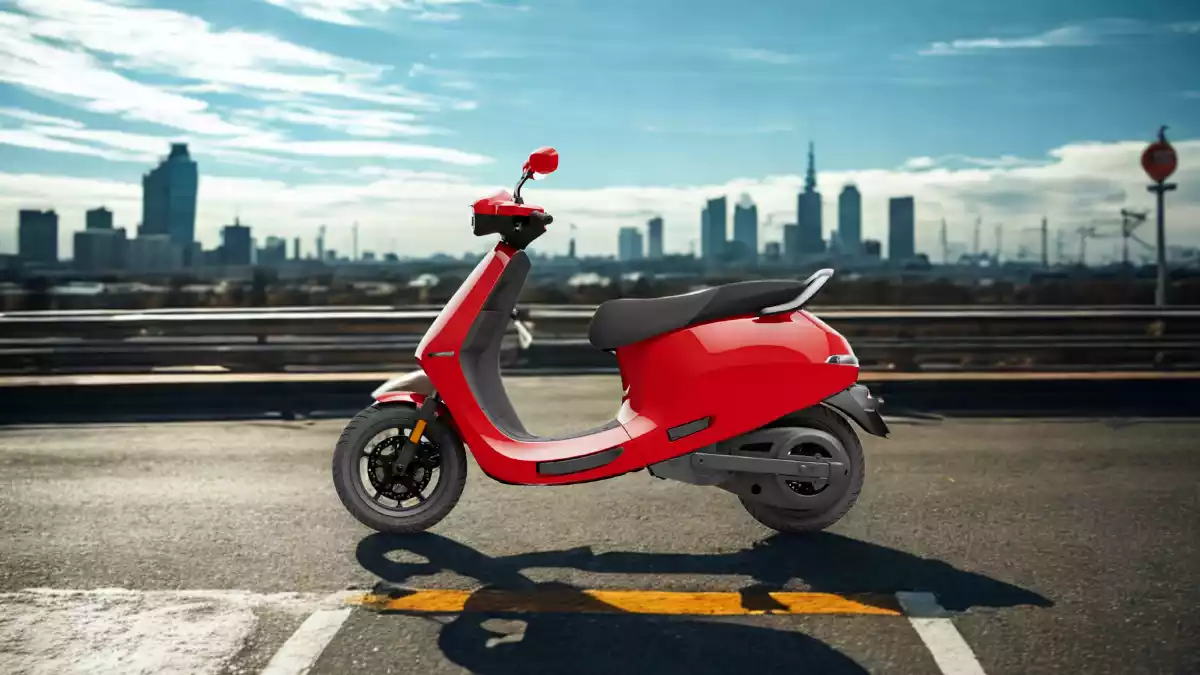Choosing between the Maruti Suzuki Baleno vs Hyundai i20 is a common dilemma for buyers looking for a premium hatchback packed with style, features, and performance. Both cars have carved strong reputations in the Indian market and continue to attract attention with their fresh updates in 2025. Think of this as a friendly, straightforward discussion so you can understand how each car performs in real life and which might fit your needs better.
Both Baleno and i20 are modern, spacious, and well-equipped, making them popular choices for city drivers and small families alike. But beneath the surface, there are subtle differences in design, engine options, comfort, and safety that can help you decide which one aligns with your priorities. Let’s unpack these aspects one by one in simple terms so you get a clear picture.
Maruti Suzuki Baleno vs Hyundai i20 – Design & Build Quality
The Suzuki Baleno takes a sleek, modern approach to hatchback styling. It features smooth curves, a sizeable grille, and sharp LED projector headlights that give it a smart road presence without being too flashy. The overall design leans towards elegance and practicality with a spacious cabin that feels airy and comfortable, making it an easy car to live with daily.
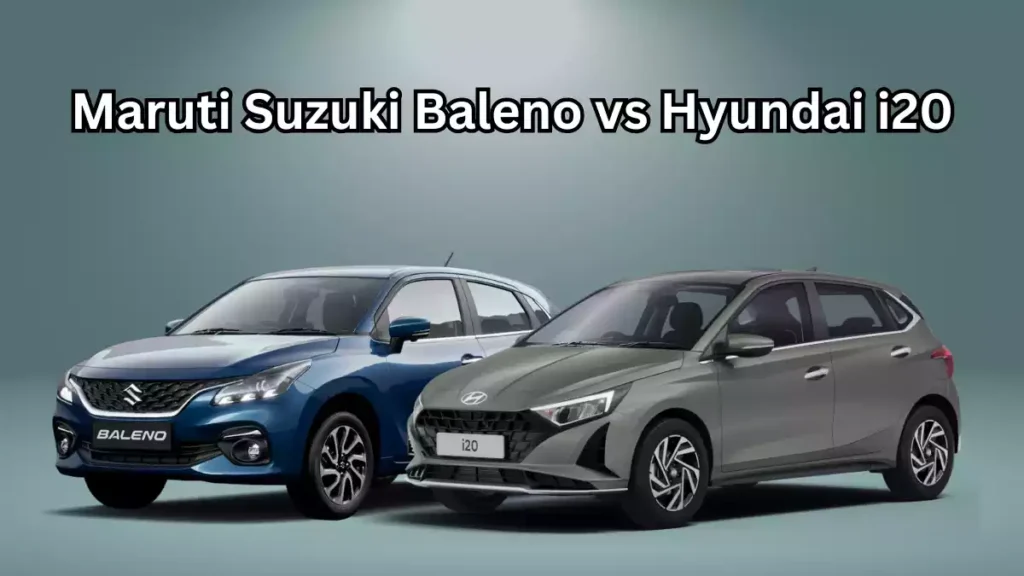
The Hyundai i20, meanwhile, brings a bolder and sportier look to the segment. Its design is more angular and aggressive, with a cascading grille and dynamic sculpted body lines that demand attention. The i20’s cabin also matches its sporty exterior with premium materials and a minimalist yet tech-focused dashboard. Build quality is top-notch for both, but the i20 edges slightly ahead with a more solidly put-together feel that users often praise for its refinement.
Maruti Suzuki Baleno vs Hyundai i20 – Performance Comparison
In terms of driving, both cars deliver smooth and predictable experiences suitable for city traffic and highway cruising. The Baleno feels light and easy to maneuver, making it a breeze to park and glide through crowded streets. It offers a composed ride quality that absorbs minor bumps well without feeling too soft.
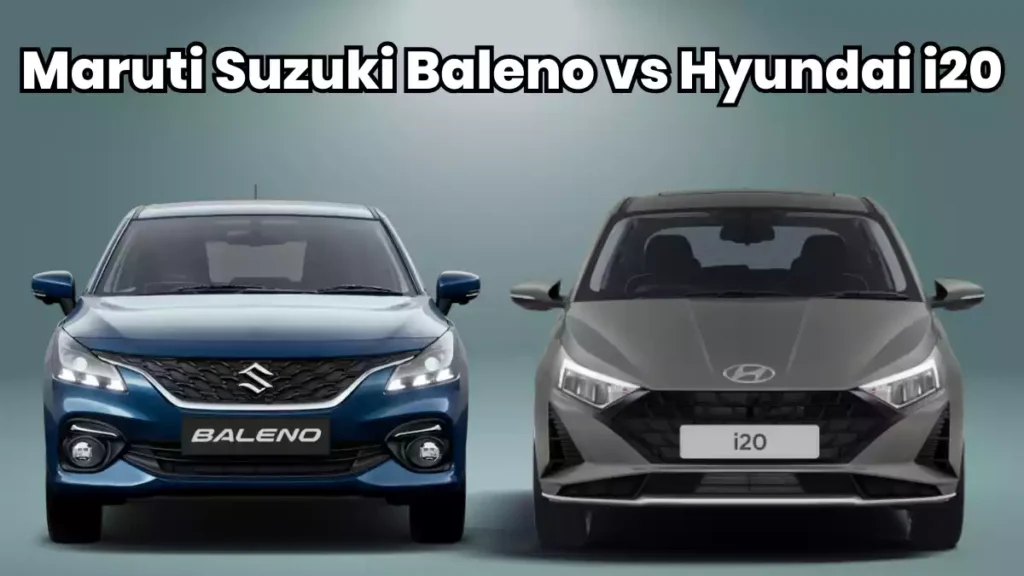
Hyundai i20 offers a slightly more engaging drive, with sharper steering feedback and a suspension tuned for a bit more grip in corners. If you enjoy a sportier drive but still want comfort on patchy roads, the i20 strikes a nice balance. Whether it’s stop-and-go traffic or highway overtaking, both cars handle well but with different tuning focuses — Baleno favors comfort while i20 leans to sportiness.
Maruti Suzuki Baleno vs Hyundai i20 – Engine Specs Comparison
Under the hood, the Baleno offers a modern 1.2-litre DualJet petrol engine producing around 90bhp and 113Nm of torque, paired with options including a 5-speed manual, CVT automatic, and now a mild-hybrid variant for better efficiency. The petrol powertrain is refined and fuel-friendly, perfect for urban commuting and smooth highway cruising.
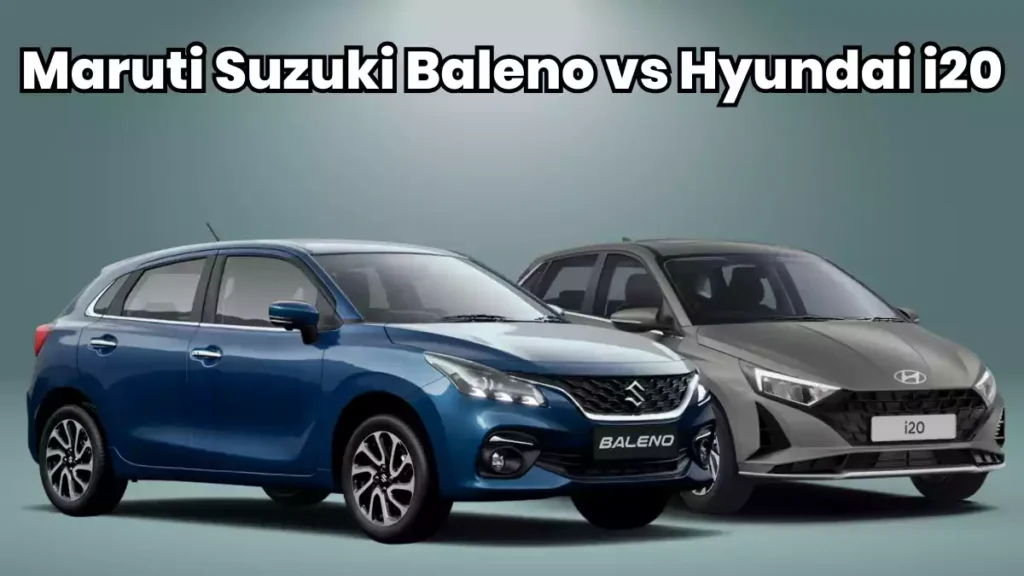
The Hyundai i20 ups the ante with its Smartstream 1.2-litre petrol engine delivering about 83bhp and 114Nm torque with a 5-speed manual or CVT options. Additionally, the i20 offers a 1.0-litre turbocharged petrol engine with higher output around 120bhp and 172Nm torque, paired with a 6-speed manual or DCT automatic transmission, offering a feistier driving experience for those wanting some extra punch.
Maruti Suzuki Baleno vs Hyundai i20 – Features & Interior Comparison
Inside the Baleno, you find a roomy cabin with comfortable seats and a straightforward dashboard. It includes a 9-inch touchscreen infotainment system with Apple CarPlay and Android Auto, automatic climate control, rear parking sensors, and ambient cabin lighting in higher variants. The instrument cluster is modern, with a mix of analogue dials and a digital MID.
Hyundai i20 impresses with a slightly more premium cabin featuring a 10.25-inch touchscreen infotainment system, wireless smartphone connectivity, connected car tech with Hyundai’s BlueLink, and a Bose premium sound system in top trims. The i20 also offers a digital instrument cluster, sunroof, and multiple drive modes in turbo variants, making it feel a segment above in terms of technology and customization.
Maruti Suzuki Baleno vs Hyundai i20 – Mileage & Efficiency
Fuel efficiency remains a strong point for the Baleno, especially with the mild hybrid petrol option pushing ARAI-certified mileage over 23 kmpl. Even the non-hybrid petrol CVT variants provide decent efficiency in the 19-21 kmpl range in real-world conditions, making Baleno one of the most economical choices in the premium hatchback space.
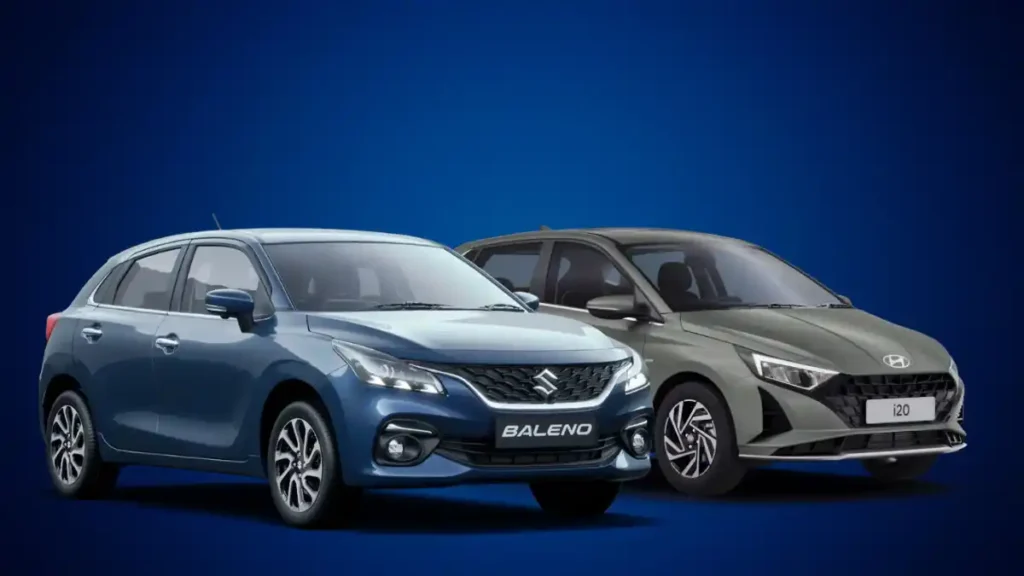
Hyundai i20’s mileage varies depending on the engine. The 1.2-litre naturally aspirated petrol offers figures close to 19-20 kmpl, while the turbocharged 1.0-litre variants manage around 18-19 kmpl. The extra power comes with a slight drop in fuel economy but remains competitive considering the performance on offer. For buyers prioritizing frugality, Baleno’s mild-hybrid system is a pragmatic option.
Maruti Suzuki Baleno vs Hyundai i20 – Safety Features Comparison
Both cars come with a solid safety package to provide peace of mind. The Baleno includes dual front airbags, ABS with EBD, rear parking sensors, and ISOFIX child seat anchors as standard. Higher variants add features like a reverse parking camera, seatbelt reminders, and speed alert systems.
Hyundai i20 goes a step further, offering up to six airbags in top trims, electronic stability control (ESC), hill-start assist, rear camera with dynamic guidelines, and tire pressure monitoring system (TPMS). The inclusion of ESC and additional airbags in the i20 gives it an edge in safety features, appealing to buyers who prioritize active safety tech.
Maruti Suzuki Baleno vs Hyundai i20 – Comparison Table
| Feature | Maruti Suzuki Baleno | Hyundai i20 |
|---|---|---|
| Price (Ex-Showroom) | ₹6.10 – ₹9.00 lakh | ₹7.34 – ₹11.00 lakh |
| Engine Options | 1.2L DualJet Petrol, Mild Hybrid option | 1.2L Petrol NA, 1.0L Turbo Petrol |
| Power Output | 90 bhp (Petrol) | 83 bhp (1.2L NA Petrol), 120 bhp (1.0L Turbo) |
| Torque | 113 Nm | 114 Nm (1.2L), 172 Nm (1.0L Turbo) |
| Transmission | 5-speed Manual, CVT, Mild Hybrid CVT | 5-speed Manual, CVT, 6-speed Manual, DCT |
| Mileage (ARAI) | Up to 23.87 kmpl (Mild Hybrid variant) | 18–20 kmpl (varies by engine) |
| Infotainment | 9-inch Touchscreen with Apple CarPlay & Android Auto | 10.25-inch Touchscreen with BlueLink, Bose System |
| Safety | Dual Airbags, ABS with EBD, ISOFIX | Up to 6 Airbags, ESC, ABS, Hill-Start Assist |
| Boot Space | 339 litres | 311 litres |
| Ground Clearance | 170 mm | 170 mm |
Final Verdict
Both the Suzuki Baleno and Hyundai i20 are strong contenders in the premium hatchback segment, but your choice depends on what you value most. If fuel efficiency, spacious interiors, and dependable low-cost maintenance are your top concerns, the Baleno is a fantastic choice with its mild-hybrid technology and practical approach.
On the other hand, if you prefer a peppier engine, extra safety tech, more premium cabin features, and are willing to spend a little extra, the Hyundai i20 offers a package that delights with its tech-savvy options, turbo engine, and refined driving experience. Either way, you’ll be getting a solid, reliable hatchback designed for Indian roads in 2025.
We hope this comparison helps you make an informed decision. for more updates, reviews, and car comparisons, visit IndianGadi.com – your go-to hub for everything on wheels!
FAQs About Maruti Suzuki Baleno vs Hyundai i20
Which car offers better fuel efficiency?
The Suzuki Baleno, especially in its mild-hybrid variant, delivers superior mileage compared to the Hyundai i20, making it more economical for daily commuters.
Which car has a more spacious interior?
Baleno offers more boot space and a roomy cabin, although the i20 feels slightly more premium inside with better material quality.
Is the Hyundai i20 safer than the Baleno?
Yes, the Hyundai i20 offers more comprehensive safety features including multiple airbags and stability control, giving it an edge over the Baleno’s safety package.
Which car is better for city driving?
Both are excellent, but Baleno’s lighter feel and smooth CVT make it slightly easier for stop-and-go traffic, while i20 offers more power and sharper handling for enthusiast drivers.
What about maintenance costs?
Maruti Suzuki is traditionally cheaper and easier to maintain with widely available service centres, while Hyundai’s costs are slightly higher but justified by added features and refinement.







